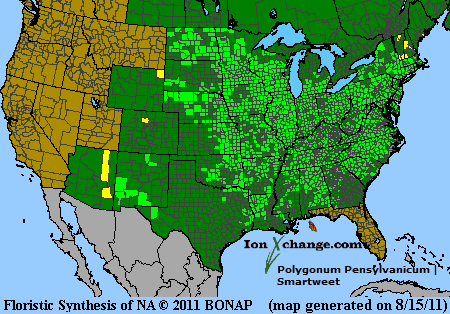 Loading... Please wait...
Loading... Please wait...- Home
- SEEDS
- SEED MIXES
- BUY PLANTS
- Info Request
-
Educational Videos
- Greenhouse Transplanting Demonstration
- Native Seed Cleaning demonstration at Ion Exchange Native Seed and Plant Nursery
- Attracting Butterflies
- Bidens - Bidens cernua Harvest Video
- Big Blue Stem Harvest
- Butterfly Milkweed Video
- Button Blazingstar - Liatris aspera Video
- Buttonbush - Cephalanthus occidentalis Video
- Canada Anemone - Anemone canadensis Harvest Video
- Cardinal Flower - Lobelia cardinalis Video
- Control Burn - Wildflower Field
- Cream Gentian - Gentiana flavida
- Culver's Root - Veronicastrum virginicum Video
- Cup Plant - Silphium perfoliatum Video
- Dormant Seeding | Planting
- Earthyman's Favorite Wildflowers Video
- Eco-Friendly Golf Course Seed Mix
- Floating Islands
- Fringed Loosestrife - Lysimachia ciliata Video
- Giant Yellow Hyssop - Agastache nepetoides Video
- Indiangrass - Sorghastrum nutans Video
- Iowa Prairie Partner Program
- Leadplant - Amorpha canescens (Potted) Video
- Meadow Blazingstar - Liatris ligulistylis
- Midland Shooting Stars - Dodecatheon meadii Video
- Native Plant Nursery Field Irrigation Experiment
- Nodding Onion - Allium cernuum Video
- Ohio spiderwort - Tradescantia ohiensis Video
- Old Man's Beard - Clematis virginiana blooms Video
- Oxeye Sunflower - Heliopsis helianthoides Video
- Prairie Spiderwort - Tradescantia bracteata
- Purple Coneflower - Echinacea purpurea Video
- Rain Garden or Water Garden Video
- Rattlesnake Master - Eryngium yuccifolium Video
- Riverbank Stabilization - Wetland Plants
- Rose Mallow - Hibiscus militaris Video
- Rosinweed - Silphium integrifolium Video
- Royal Catchfly - Silene regia
- Showy Tick Trefoil - Desmodium canadense Video
- Sneezeweed - Helenium autumnale Video
- Swamp Betony - Pedicularis lanceolata Video
- Swamp Milkweed - Asclepias incarnata Video
- Sweet Blackeyed Susan - Rudbeckia subtomentosa Video
- Tall Coreopsis - Coreopsis tripteris Video
- Urban Butterfly Garden
- Wild Bergamot - Monarda fistulosa Video
- Wild Geranium - Geranium maculatum Harvest
- Wild Goldenglow - Rudbeckia lanciniata Video
- Wild Petunia - Ruellia humilis Harvest Video
- Woodland Knotweed - Polygonum virginianum Video
- Yellow Coneflower - Ratibida pinnata Video
- Blog
- Resources
- Policies
Contact Us
Phone:
563-419-0837
or 563-535-7231
Email:
hbright@ionXchange.com
Browse Products
Add to Wish List
You Recently Viewed...
Our Newsletter
Product Description
"Smartweed, Pennsylvania Smartweed"
Polygonum comes from the word poly meaning "many" and gonu meaning "knee" or "joint". This is in reference to the thickened joints of this species. Pensylvanicum literally means "of Pennsylvania".
| Sun Exposure | Prairie, Savanna |
| Soil Moisture | Wet Mesic, Mesic |
| Bloom Time |
Summer, Fall August, September |
| Bloom Color | White |
| Max Height | 2 feet |
| Wetland Code | OBL |
| Germ Code | C(60),D |
| Seeds Per Ounce | 7,800 |
Smartweed is found on damp soils of roadsides and fields in the north-central Tallgrass region. Grows from 1 to 4 feet in height. Can be erect or sprawling; leaves are lanceolate. Rose-pink to white flowers bloom in small clumps from June to October. The joints of this plant are tinged reddish.
Found on damp soils of roadsides and fields in the north-central Tallgrass region. Grows from 1 to 4 feet in height. Can be erect or sprawling; leaves are lanceolate. Rose-pink to white flowers bloom in small clumps from June to October. The joints of this plant are tinged reddish.
Native Americans made a tea from the whole plant to treat diarrhea. A bitter leaf tea was made to stop bleeding of the mouth. The tops of P. pensyvanicum were used to make a tea to treat epilepsy.
Edible Uses: Unknown
Medicinal Uses: An infusion of the plant tops has been used in the treatment of epilepsy.
An infusion of the leaves has been used to treat haemorrhages of blood from the mouth and to aid postpartum healing.
The leaves have been used as a wipe on the anus in treating bloody piles.
Herbal Uses: Unknown







